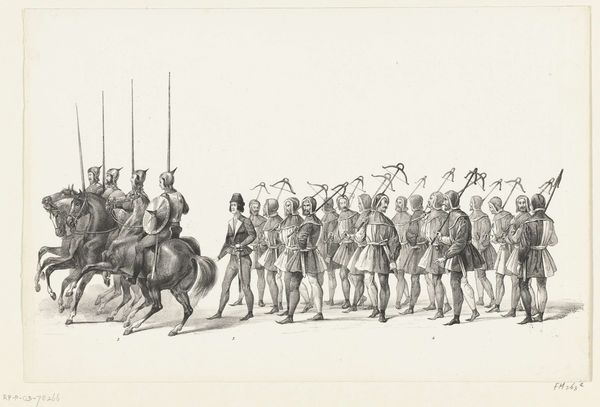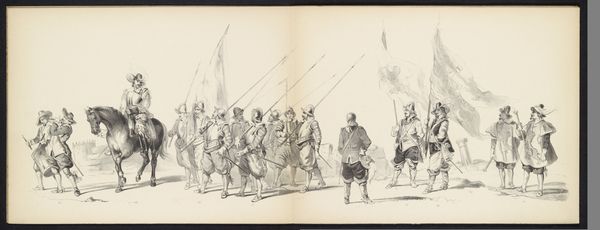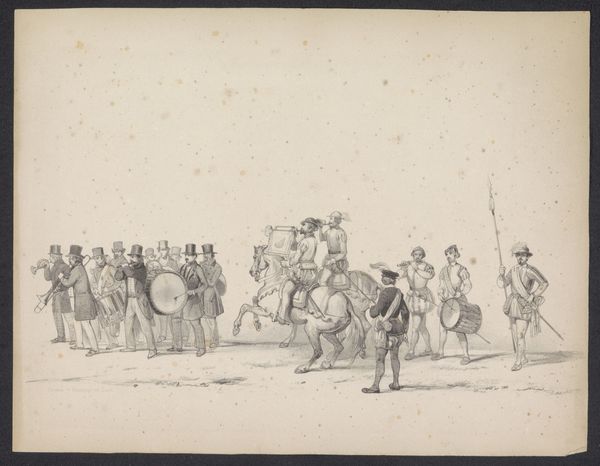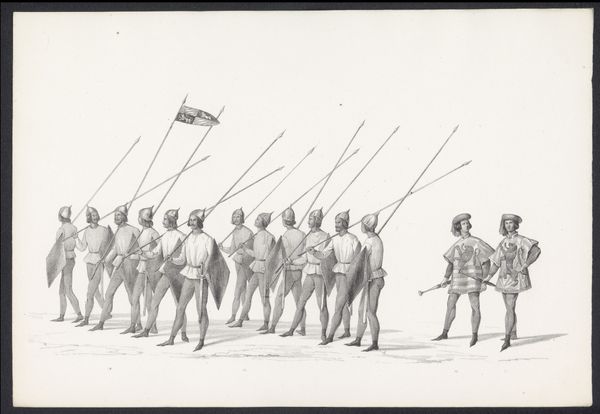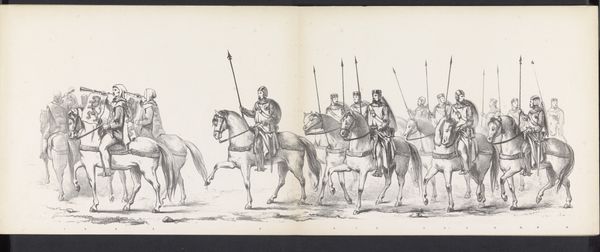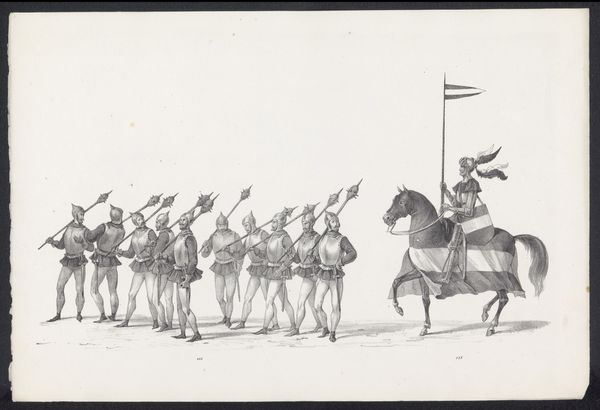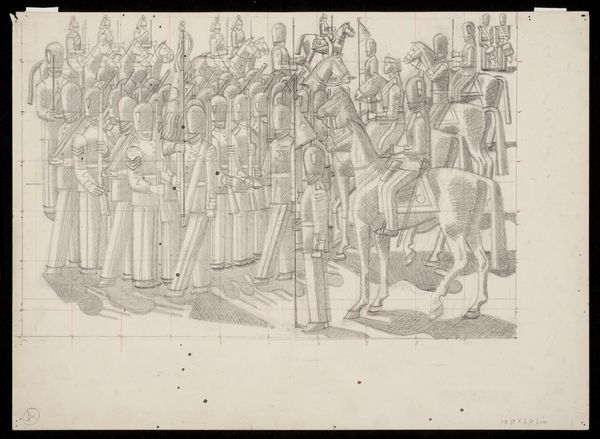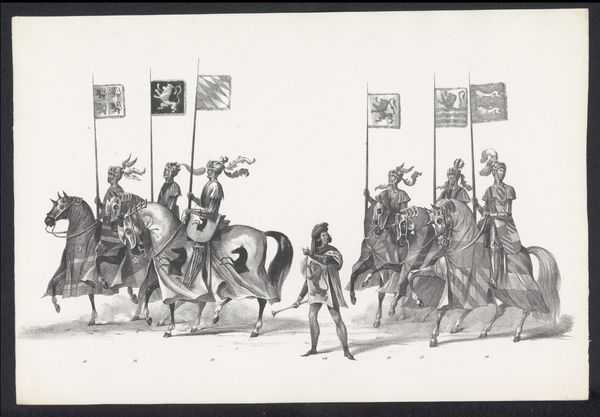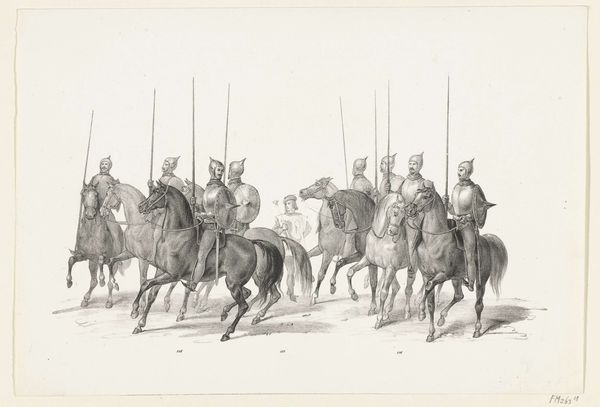
Maskerade door studenten van de Leidse Hogeschool, 1840 (plaat 2) 1840
0:00
0:00
drawing, ink, pen
#
drawing
#
ink drawing
#
pen drawing
#
pen illustration
#
pen sketch
#
figuration
#
ink
#
line
#
pen
#
genre-painting
#
history-painting
#
academic-art
Dimensions: height 232 mm, width 340 mm
Copyright: Rijks Museum: Open Domain
Curator: The work before us is a pen and ink drawing, "Masquerade by Students of the Leiden Academy, 1840 (plate 2)" crafted by Jacobus Ludovicus Cornet. The medium lends itself well to the depiction of what appears to be some kind of historical or genre scene. What strikes you most about this work? Editor: Immediately? This almost feels… comical. There's something about the repetitive nature of the figures, like they're playing dress-up, and the somber grayscale hues contribute to a sort of historical tableau vivant with a touch of irony. A bit too tidy to take seriously, though. Curator: Indeed, there is a constructed artificiality. This drawing offers a glimpse into the culture of student life at the time, perhaps alluding to their interest in reenactments or costumed events, which reflects the material culture and the ways in which history was consumed and re-enacted during the nineteenth century. Academic art sought order, but its reproduction created the illusion of something else: a spectacle or play, right? Editor: Absolutely, the "Masquerade" suggests performance. Look at the arrangement—soldiers on horseback, marching students with these archaic crossbows... it has all the seriousness of a theatre piece but translated through ink and paper. Were these historical reenactments popular at the time, you think? Were they playing with their privilege, their roles? Curator: Certainly. These events weren't merely frivolous entertainments; they reveal the role of historical pageantry in constructing and reinforcing cultural values. The costumes and chosen historical roles allowed students to playfully assert or question prevailing norms of Dutch national identity. Editor: I’d wager they didn’t just pick any character. Who the characters are adds volumes to the scene. Do you think the artist would've seen past this event? To them playing out something far beyond a masquerade? Curator: Possibly. And note how the pen and ink itself enables this layering; the line work defines but also leaves room for imagination, making this a reproduction that’s also deeply interpretive. Perhaps this isn’t just observation, but critique rendered in painstaking detail. Editor: It almost feels like a stage design rendered flat, as if it has collapsed on itself, and is telling a story in only a few acts. These moments capture and freeze-frame moments for later introspection. I will be thinking about this tableau, though, no doubt.
Comments
No comments
Be the first to comment and join the conversation on the ultimate creative platform.
